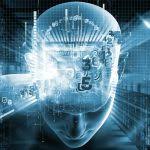AI Achilles Heel Hackers Expose Deep Cybersecurity Vulnerabilities.
The rise of Artificial Intelligence (AI) has brought immense possibilities, transforming industries and shaping our future. But behind the allure of this powerful technology lies a stark reality: AI is vulnerable to hacking.
Recent reports paint a worrying picture. An anonymous hacker, part of an international movement seeking to expose the weaknesses of major tech companies, has been ‘jailbreaking’ language models like those developed by Microsoft, ChatGPT, and Google. This deliberate stress-testing of AI systems reveals their inherent vulnerabilities, raising serious concerns about their security.
Beyond language models, the threat is real and impactful. Just two weeks ago, Russian hackers leveraged AI for a devastating cyberattack on major London hospitals. This ransomware attack, which affected blood transfusions and test results, forced hospitals to declare a critical incident, highlighting the catastrophic consequences of AI vulnerabilities.
So, what’s the issue?
* Data Poisoning: Hackers can manipulate the training data used to build AI models, introducing malicious biases that can lead to erroneous outputs or compromised decisions.
* Model Inversion: This technique allows attackers to reconstruct sensitive data used to train a model, potentially exposing confidential information.
* Adversarial Attacks: Hackers can create carefully crafted inputs that trick AI models into making incorrect predictions or executing unintended actions.
The stakes are high. As businesses increasingly rely on AI to improve systems and make critical decisions, the potential for exploitation grows exponentially.
What can be done?
* Secure AI Development: Integrating robust security measures during the design and training phases of AI models is crucial.
* Continuous Monitoring: Vigilant monitoring of AI systems for anomalies and security breaches is essential.
* Collaborative Research: Fostering collaborative research and development between academia, industry, and governments to address emerging AI security threats.
The AI revolution is here to stay, but it must be built on a foundation of trust and security. As the lines between the physical and digital world blur, safeguarding AI systems becomes paramount. Neglecting the security of this powerful technology will only amplify the risks and expose us to unimaginable vulnerabilities.
This is not a time for complacency. We need to act now to secure the future of AI and ensure its benefits are realised responsibly.








